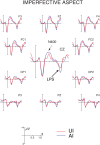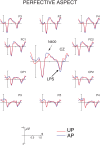The neurophysiology of language processing shapes the evolution of grammar: evidence from case marking
- PMID: 26267884
- PMCID: PMC4534460
- DOI: 10.1371/journal.pone.0132819
The neurophysiology of language processing shapes the evolution of grammar: evidence from case marking
Abstract
Do principles of language processing in the brain affect the way grammar evolves over time or is language change just a matter of socio-historical contingency? While the balance of evidence has been ambiguous and controversial, we identify here a neurophysiological constraint on the processing of language that has a systematic effect on the evolution of how noun phrases are marked by case (i.e. by such contrasts as between the English base form she and the object form her). In neurophysiological experiments across diverse languages we found that during processing, participants initially interpret the first base-form noun phrase they hear (e.g. she…) as an agent (which would fit a continuation like … greeted him), even when the sentence later requires the interpretation of a patient role (as in … was greeted). We show that this processing principle is also operative in Hindi, a language where initial base-form noun phrases most commonly denote patients because many agents receive a special case marker ("ergative") and are often left out in discourse. This finding suggests that the principle is species-wide and independent of the structural affordances of specific languages. As such, the principle favors the development and maintenance of case-marking systems that equate base-form cases with agents rather than with patients. We confirm this evolutionary bias by statistical analyses of phylogenetic signals in over 600 languages worldwide, controlling for confounding effects from language contact. Our findings suggest that at least one core property of grammar systematically adapts in its evolution to the neurophysiological conditions of the brain, independently of socio-historical factors. This opens up new avenues for understanding how specific properties of grammar have developed in tight interaction with the biological evolution of our species.
Conflict of interest statement
Figures





References
-
- Greenberg JH (1963) Some universals of grammar with particular reference to the order of meaningful elements In: Greenberg JH, editor, Universals of Language, Cambridge, Mass.: MIT Press; pp. 73–113.
-
- Hawkins JA (2004) Efficiency and complexity in grammars. Oxford: Oxford University Press.
-
- Blevins J (2004) Evolutionary phonology: the emergence of sound patterns. New York: Cambridge University Press.
Publication types
MeSH terms
LinkOut - more resources
Full Text Sources
Other Literature Sources
Research Materials

